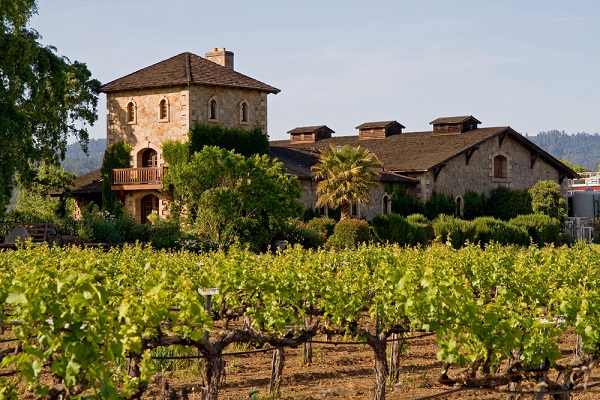3 Ways Agents Can Assist Wineries in a Dynamic Market

By: Olivia Overman
Due to several severe wildfires in recent years, the winery industry has been feeling the pain. California wildfires have dominated the headlines in the U.S. since 2017 and continue to cost the winery industry billions of dollars annually.
“I would say that 2017 started the snowball effect when there was a triple hit of three fires all at once around the Wine Country,” says Larry Chasin, CEO of PAK Programs. “We had the Thomas fire in Ventura County, the Atlas fire in Napa County and the Nuns fire in Sonoma, plus there were a couple of smaller fires that linked up with those. From that year on, wildfires became an event year after year.”
As the American agriculture industry continues to deal with extreme weather events, such as flash floods, tornadoes, high wind, snow and temperature changes, agents and carriers are grappling with how to help assess and mitigate issues within the wine region.
“We are definitely leaning into a more boots-on-the-ground approach,” says Justin Guerra, risk management specialist, PAK Programs. “No behind-the-desk underwriting or location assessment. We like to get out there on the ground and see each risk individually on a case-by-case basis.”
Across agriculture, technology is assisting agents and carriers in proactively assessing clients’ risks. “We’re using a lot of different technology to accomplish that quickly—and that includes drone technology,” says Guerra. “We walk through some of these risks and fly a drone, capture different telemetry and get an aerial overview of the property.”
And with improving technology, “high-clarity maps of the property and different images of buildings that allow the construction of 3D models where an underwriter can walk through the building again are available to help assess the risk,” Guerra says.
Yet, as wildfire season is seeming to become an annual occurrence, agents and carriers must learn more about the challenges their winery clients face and the mitigation efforts that are required. “A key theme is that many risks in our niche are without coverage and are certainly without proper coverage,” Chasin says. “From the wineries’ perspective, there are efforts underway to better communicate to insurers the community mitigation efforts that are underway to attract additional capacity in the marketplace.”
Fortunately, the wildfires over the past number of years have brought loss prevention and control to the forefront for many winery and vineyard owners. Carriers, agents and growers are banding together as a community, working with local officials. “They’re not going to just sit around and accept the status quo—they’re going to roll up their sleeves and work together to make it better,” Chasin explains.
“It’s interesting that at a community level, there’s things like artificial intelligence (AI) fire watch cameras being installed around Napa Valley,” which provides “an early warning system to be able to detect smoke and alert the California fire service,” Chasin says. “That sort of early response is critical in keeping an event from expanding.”
Many vineyard owners have expanded their businesses into wineries, opening their doors to the public for wine tasting and sometimes even as vacation spots. For agents operating within the winery niche, there are often additional liabilities to consider—particularly when it comes to their clients operating wineries on their properties. In those instances, agents need to consider offering coverage that includes the vineyard, a manufacturing facility, a retail store, a bar and sometimes even a restaurant.
When assessing such a dynamic risk, here are three things agents should consider:
1) Spend time at the risk. Today, many vineyards also operate wineries and in 2021, California had more than 6,000 wineries—compared to the almost 1,400 wineries in Washington, the next biggest winery state, according to VinePair. For agents working with vineyard and winery owners, spending time with a client to understand the extent of their risk is essential.
Wineries in particular have been gaining in popularity over the past number of years and have become a favored rendezvous of an ever-expanding clientele.
To understand the different types of risks involved, agents should “sign up for a tasting, look at how the staff interacts with customers, take a tour, attend special events and follow their social accounts where they’re going to make announcements about all these new things that they might be doing,” Guerra says.
“You can proactively pick up the phone or, and have a conversation about, ‘Hey, this grape stomp experience that you’re about to do sounds great. And I’m sure everybody loves it, but you should really use a waiver in case somebody gets hurt while they’re stomping grapes,’ as an example,” he says.
2) Ensure valuations are correct. Replacement costs for rebuilding structures and replacing or repairing complex machinery have increased dramatically. “We’ve seen tremendous increases in these costs and that’s without the disaster factor of many people needing to rebuild at one time,” Guerra says.
Agents are key partners in identifying such changes and valuations and ensuring clients have sufficient coverage.
3) Identify the strategic plan. Agents should identify any growth plans their clients may have in place as any new strategy may add value and increase the values identified on any insurance policies.
“We understand how dynamic the wine-making business is—facilities can be large, sometimes over a wide property area, operations expand, equipment is added,” Guerra says. “There is the assumption that everything is absolutely covered. This might not be the case at a fast-growing business or a large-scale operation where smaller items can be easily overlooked.”
Olivia Overman is IA content editor.










